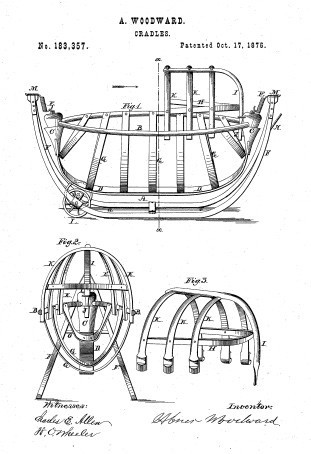
Abner Woodward, drawing for U.S. Patent 183,357, October 17, 1876. (U.S. Patent and Trademark Office.)
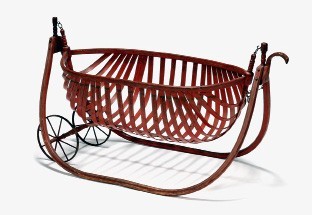
Woodward patent cradle. (Courtesy, Leland Little Auctions.)
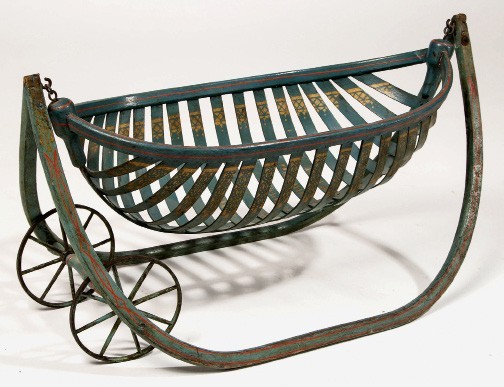
Woodward patent cradle. (Courtesy, Jeffrey S. Evans and Associates Auctions; photo, William McGuffin.)
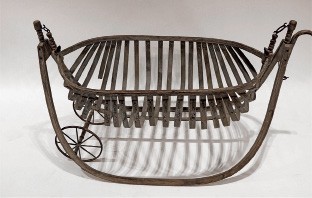
Woodward patent cradle. (Courtesy, Nebraska History.)
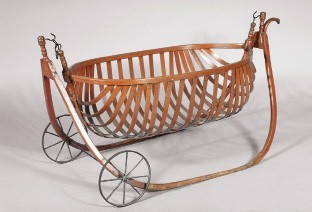
Woodward patent cradle. (Courtesy, Canadian Museum of History.)
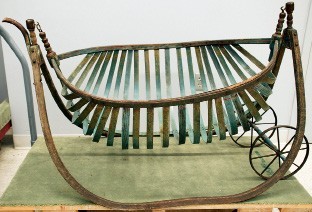
Woodward patent cradle. (Courtesy, Heinz History Center.)
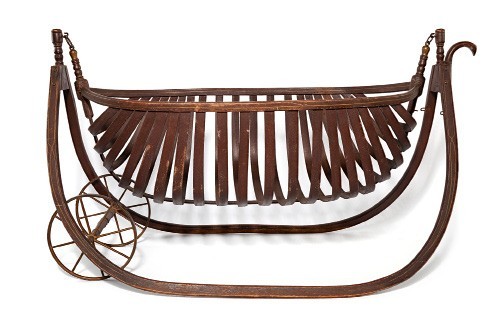
Woodward patent cradle. H. 30", W. 50", D. 24". (Courtesy, National Museum of American History, Smithsonian Institution.)
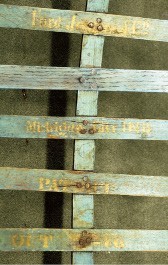
Detail of the stenciling on the cradle illustrated in fig. 6.
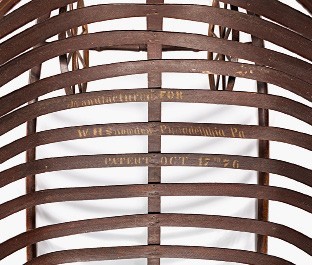
Detail of the stenciling on the cradle illustrated in fig. 7.
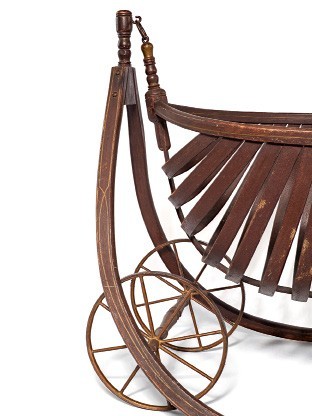
Detail of the wheel end on the cradle illustrated in fig. 7.
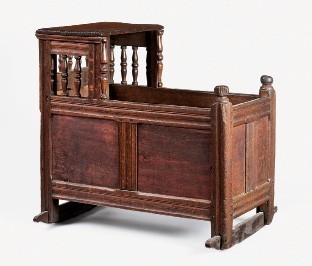
Cradle, southeastern Massachusetts, 1660–1700. Red oak, white pine, maple. H. 32", W. 33 3/4", D. 24 1/4". (Courtesy, Wadsworth Atheneum.)
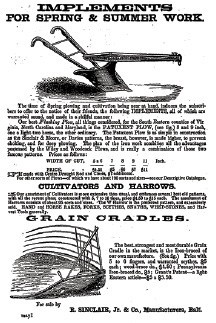
Advertisement for Sinclair and Co. Grain Cradles, American Farmer (June 1858): 415.
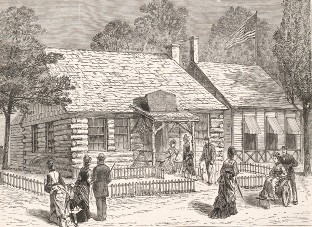
“New England Kitchen,” Frank Leslie’s Illustrated Historical Register of the Centennial Exposition (1876). Wood engraving. (Courtesy, Library of Congress.)
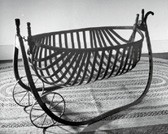
Woodward cradle model, “Old and New England, an Exhibition,” Rhode Island School of Design, January–February 1945. (Courtesy, Getty Life Magazine Archive; photo, Fritz Goro.)
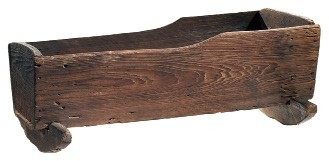
Cradle, South Carolina, 1830–1860. Yellow pine. H. 15 1/2", W. 40", D. 23". (Courtesy, National Museum of African American History and Culture, Smithsonian Institution.)
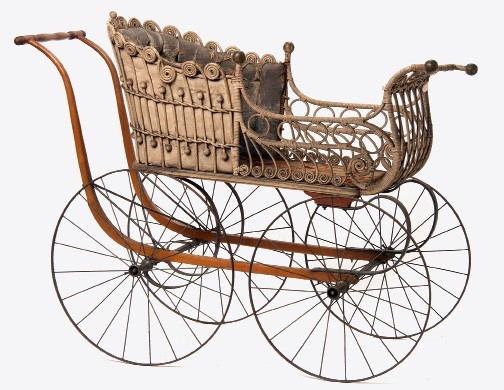
Upholstered baby carriage, 1890–1899. Wicker, beech, iron, fabric. H. 39", W. 48 1/2", D. 20". (Courtesy, Minnesota Historical Society.)
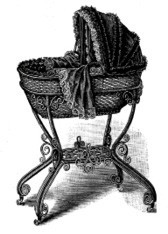
Bassinet with stand, Harper’s Bazaar (June 7, 1890): 23.
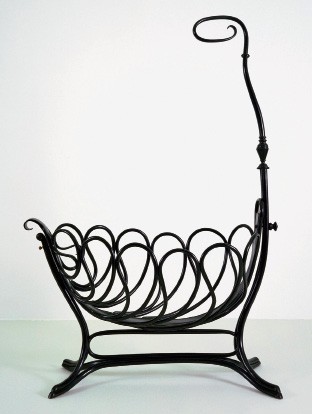
Cradle or bassinet, J. and J. Kohn, Austria, ca. 1895. Ebonized laminate. H. 80 1/4", W. 56 1/4", D. 25 7/16". (Courtesy, Museum of Modern Art.)
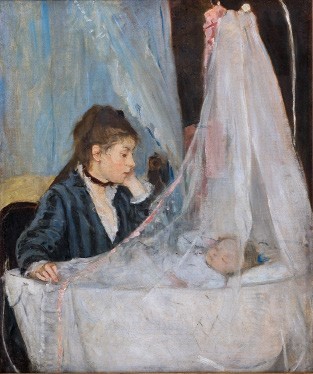
Berthe Morisot, Le Berceau, 1872. Oil on canvas. H. 22" x W. 18". (Courtesy, Musée d’Orsay.)
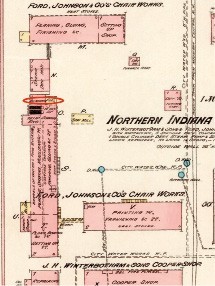
Detail of the Sanborn Fire Insurance map of Michigan City, Indiana, 1884, p. 7, showing “Ford, Johnson, & Co.” factory buildings inside “Northern Indiana State Prison,” with engine room stocked with “bending fuel” circled. (Courtesy, Library of Congress.)
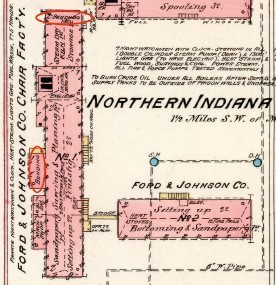
Detail of the Sanborn Fire Insurance map of Michigan City, Indiana, 1889, p. 16, showing the “Ford & Johnson Co.” factory buildings, with “bending rooms” circled. (Courtesy, Library of Congress.)
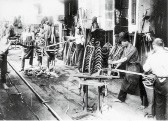
Photograph showing workers in the bending room at the Thonet Brothers factory in Boppard-am-Rhein, Germany, ca. 1900. (Courtesy, Museum Boppard.) Thonet pioneered the industrial production of bentwood furniture.
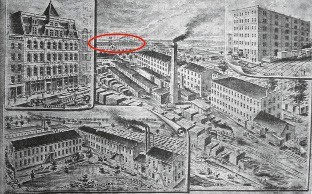
Lithograph showing the Ford, Johnson and Co. Chicago showroom and warehouse, and the new Michigan City factory complex, with the Indiana State Prison North circled in the background. In: American Cabinet Maker and Upholsterer (September 1890): 13.
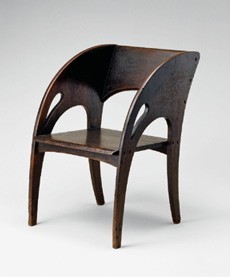
Chair, Ford-Johnson Co., Michigan City, Indiana, 1904–1905. Oak. H. 31 7/8", W. 20 1/2", D. 9 5/8". (Courtesy, Art Institute of Chicago.)
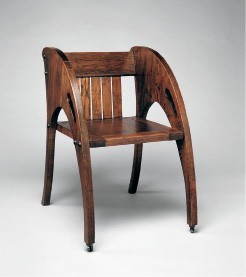
Chair, Ford-Johnson Co., Michigan City, Indiana, ca. 1904. Oak, poplar. H. 31 1/2", W. 20 3/8", D. 25 1/2". (Courtesy, Metropolitan Museum of Art.)
